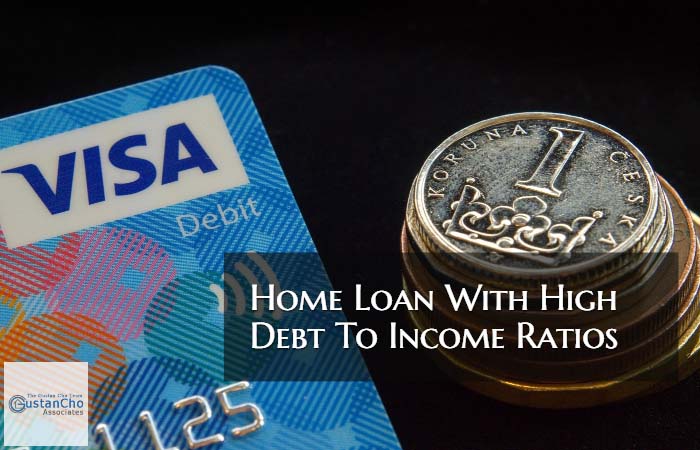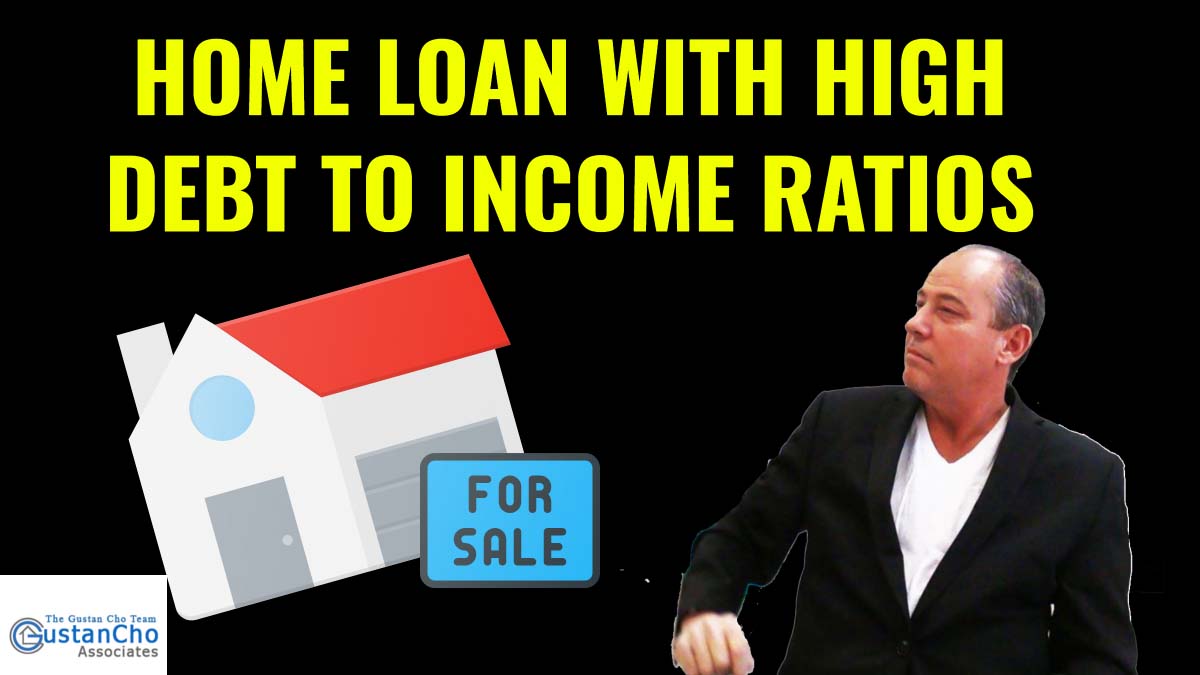Home Loan With High Debt To Income Ratios Mortgage Guidelines
Debt to income ratios is extremely important when it comes to mortgage qualification requirements.
- Every loan program has its maximum debt to income ratio caps
- The most generous loan program when it comes to debt to income ratios are FHA Loans
- FHA lending guidelines have a maximum back end debt to income ratio cap of 46.9% front end and 56.9% back end to get an approve/eligible per automated underwriting system
- FHA also has a maximum front end debt to income ratio of 46.9%
- Conventional loans have a maximum debt to income ratio cap of 50%
USDA Loans has a maximum debt to income ratio cap of 29% front end and back end of 41%.
Debt To Income Ratio Guidelines On VA Loans

VA Loans debt to income ratios are a little different:
- Depends on the individual VA Loan applicant
- I have seen an approve/eligible on VA Loans with debt to income ratios up to 60% DTI
- Have seen VA Loan applicant’s get a referred/eligible with a 45% debt to income ratio
- Department of Veterans Affairs does not have any minimum credit score requirements nor debt to income ratio caps
- It depends on how the overall credit and income profile of the VA applicant and how the Automated Underwriting System analyzes it
- With Jumbo Mortgages, most lenders require no greater than 40% debt to income ratios
- Non-QM Mortgage Lenders has non-QM jumbo mortgages with credit scores down to 620 and debt to income ratios up to 50%
- Non-QM Mortgage Lenders offers bank statement mortgage loans for self-employed borrowers where no income tax returns are required
In this article, we will discuss and cover Home Loan With High Debt To Income Ratios Mortgage Guidelines.
What Is Debt To Income Ratios?
Debt to income ratios is adding the amount of the mortgage loan borrower’s total monthly minimum payments and dividing it by the borrower’s gross monthly income.
- There are two types of debt to income ratios
- The front end debt to income ratio and the back end debt to income ratio
- The front end debt to income ratio is the housing payment divided by the mortgage loan borrower’s gross monthly income
- The housing payment consists of the principal, interest, taxes, and insurance
Also, if the property has homeowners association dues, the HOA is included as part of the housing payment and is calculated in the calculation of the front end debt to income ratios.
How Are Back-End Debt To Income Ratios Calculated

The back end debt to income ratios consists of the housing payment plus all other monthly minimum payments such as the following:
- minimum credit card payments
- auto loans
- student loans
- installment loans
- other monthly minimum payments that are being reported to the three credit reporting agencies also called credit bureaus
Monthly credit obligations that do not report to the credit bureaus such as insurance payments, cell phone payments, telephone payments, cable payments, and utilities are not used to calculate debt to income ratios by mortgage underwriters.
Risks With Home Loan With High Debt To Income Ratios
If you are seeking a home loan with high debt to income ratios, you are at risk for going over the debt to income ratio caps and any larger monthly payments may jeopardize on a last-minute mortgage loan denial.
For example, here is a case scenario:
- if the home buyer got homeowners insurance quote of $100 per month initially
- back end debt to income ratio is at 56.9% on an FHA Loan
- a revised increase of homeowners insurance quote of $120.00 per month from the insurance company will throw debt to income ratio caps and will disqualify a borrower for loan closing
Homebuyers with extremely high debt to income ratios need to make sure that they run a risk of not closing their mortgage loan if they exceed the maximum debt to income ratio caps allowed.
Solutions With High Debt To Income Ratios

Borrowers with high debt to income ratios, my recommendation is to make sure to pay off all credit card balances prior to officially applying for a home loan.
- Borrowers forced to pay off credit card balances during the mortgage process due to higher debt to income ratios, the lender will have borrowers pay off credit card balances PLUS CLOSEOUT CREDIT CARD ACCOUNT under Fannie Mae Guidelines
- If paying credit card balances prior to applying for a mortgage loan, borrowers will not need to close out credit card accounts in the event they need to pay off credit card balance due to exceeding the debt to income ratio caps
- Freddie Mac will allow borrowers to pay outstanding balances on credit cards during the mortgage process without having borrowers to close out the accounts
However, most lenders prefer Fannie Mac versus Freddie Mac.
Buying Down Rates As Solution To High DTI
Lenders do allow sellers to give home buyers sellers concession toward a home buyer’s closing costs.
- Sellers concessions can be used to buy down mortgage rates by home buyers
- Homebuyers with high debt to income ratios or nearing the maximum cap on their debt to income ratios may want to get extra sellers concessions
- They can use the seller’s concession to buy down mortgage rates and for any other closing costs
Another option for mortgage loan borrowers who exceed the debt to income ratio caps during the mortgage application and mortgage approval process is to explore going with adjustable-rate mortgages instead of a 30-year fixed-rate mortgage. Adjustable-rate mortgages offer much lower mortgage rates than fixed-rate mortgages.
Homebuyers looking for a home loan or homeowner looking for a refinance mortgage with high debt to income ratios, please contact us at Non-QM Mortgage Lenders at 800-900-8569 or text us for a faster response. Or email us at gcho@gustancho.com. We will explore the best option and mortgage loan program to suit your needs. We are available 7 days a week, including evenings and holidays.




